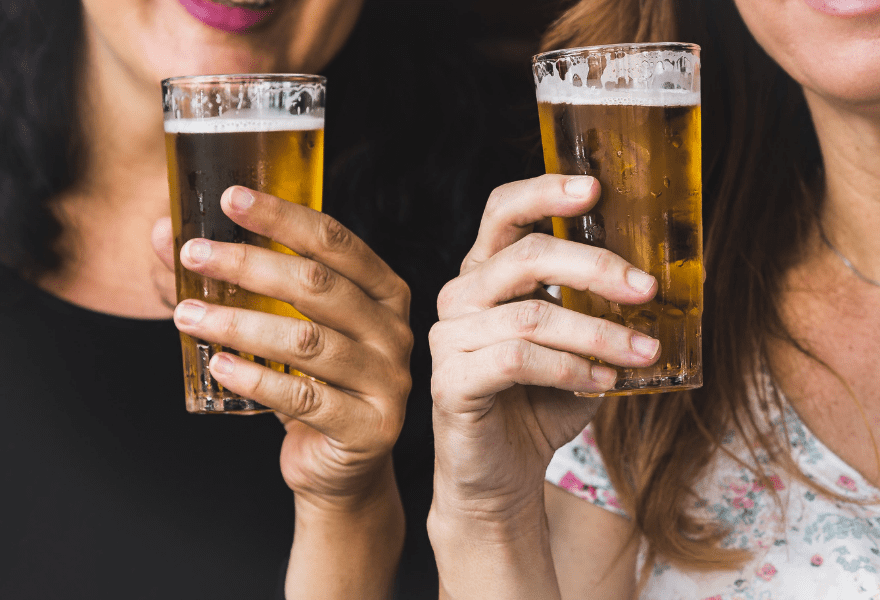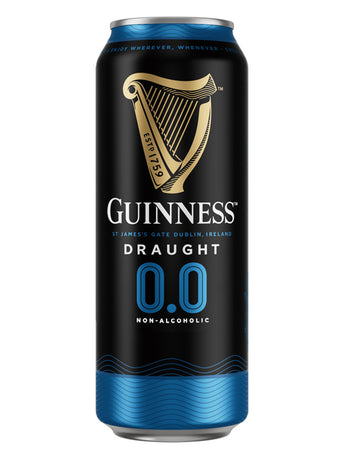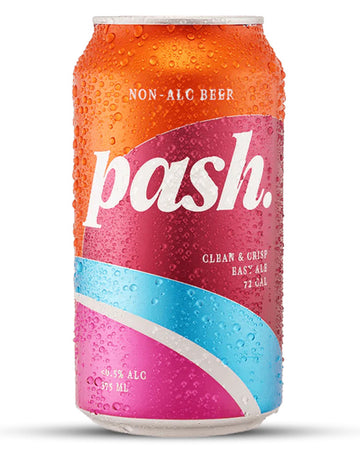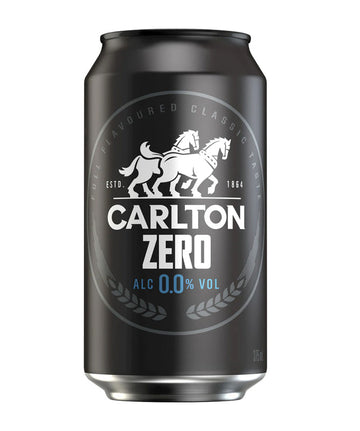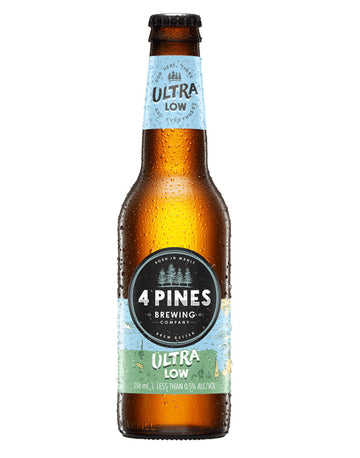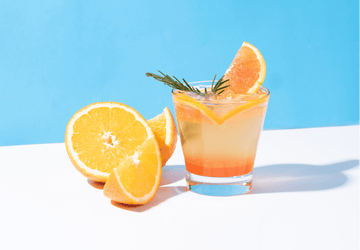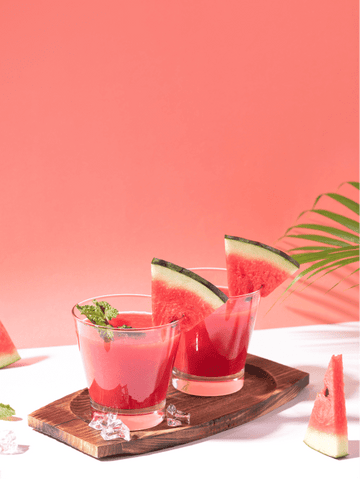Not all alcohol-free beer is crafted in the same way, there are several different methods. In fact, crafting an alc-free beer ias as much of an art as creating a traditional beer.
What is non-alcoholic beer?
A non-alc beer is commonly known as beer that contains 0.5% ABV or less. 0.5% is the same amount of alcohol that is found naturally in fruits such as oranges and bananas, so it's low enough to be inconsequential when consumed.
How is non-alcoholic beer different to alcoholic beer?
Essentially, one contains alcohol, and the other does not - it's as simple as that. A good quality alcohol-free beer is made in the same way as regular beer, using the same ingredients. And that's why alc-free beer has the same smell, taste and mouthfeel as traditional beer.
What type of non-alcoholic beer exists in Australia
From Lager Beer, Pale Ale to Stout, Heineken to Carlton, and everything in between, non-alcoholic beers have secured their place in the Australian alcohol-free drinks market. The range of 0% craft beer is expanding on an almost monthly basis - so there is something for everyone. Here are some of the beers that are currently trending:
[product name="heineken-0-0-non-alcoholic-lager"]
[product name="heaps-normal-quiet-xpa"]
[product name="upflow-ultra-pale-ale-hypotonic-beer"]
[product name="sobah-1-lemon-aspen-pilsner"]
[product name="kehrwieder-road-runner-coffee-stout"]
How is non-alcoholic beer made?
There are two popular methods used in brewing non-alcoholic beer. But before we venture into that, we have to take a look at how alcoholic beer is made. After all, you can't make non-alcoholic beer that tastes, smells and feels just like a classic beer without following a similar method.
How is beer traditionally brewed?
Grains (such as barley, wheat and rye) are converted into malt and then milled. Next the milled malt is mixed with hot water to activate the enzymes in the grains. The liquid (known as ‘wort’) is separated from the gain and boiled to incorporate other flavours (such as hops, ginger, and fruits). The wort is then cooled and added to a fermenter along with brewer’s yeast. During the fermentation process the yeast turns the sugar into alcohol.
Alcohol reduction or prevention
A lot of smaller brewers and craft breweries make alc-free beer using the alcohol reduction or prevention method. The three main types of alcohol reduction/ prevention rely on zero fermentation, limited fermentation and different strains of low-alcohol yielding yeast.
Zero fermentation
The zero fermentation method cuts out the fermentation process by removing yeast from the recipe altogether. Withholding the yeast from the wort lowers the amount of alcohol in the beer to zero. although this process may guarantee an 0.0% alcohol content, it can result in a sweeter taste.
Limited fermentation
During limited fermentation, the fermentation process can go ahead, but it’s carefully controlled so that the beer is less than 0.5%ABV. Brewers do this by tweaking the temperature and sugars during the mashing stage. It's also common for brewers to deactivate or remove the yeast from the fermentation before it can start producing high levels of alcohol. This is achieved by chilling the partially fermented beer.
Experimental yeast strains
Some breweries have been experimenting with special strains of yeast that have been specifically developed to avoid fermentation of certain types of sugars like maltose. With these strains, breweries don't have to mess with their beer making recipe or avoid fermentation to produce a better, more 'beer-like' flavour.
Non-Alcoholic Beer De-alcoholisation Process
As the name suggests, dealcoholised beer is beer that has been brewed via a traditional beer making process and then had the alcohol removed. There are several ways to dealcoholise beer including vacuum distillation, filtration, boiling off and reverse osmosis. Basically, brewers either heat the beer or filter it.
Heat treated
When beer is distilled, it is exposed to high heat in order to evaporate the ethyl alcohol out of the mixture. The reason this works is because alcohol has a lower boiling point than water, hence the alcohol is distilled. Some brewers distill their drinks by this method, completing what's referred to as 'boiling off'.
Vacuum distillation
The downside of ‘boiling off’ is that when beer is heated, flavour can be sacrificed. Because of this, many alc-free beers are crafted using vacuum distillation; it’s similar to 'boiling off,’ but the use of a vacuum reduces the amount of heat needed to boil the alcohol. This means that the flavour is closer to a classic beer.
Filtration
Membrane filtration relies on pressure to force the alcohol out of the beer. The tiny membrane is small enough to separate the alcohol and water (and some flavour compounds). Then, brewers distil the alcohol and return the water to the beer.
Reverse osmosis
Reverse osmosis works in a similar way. A special ‘dalcoholiser’ is used to carry out the filtration, and then it performs ‘diafiltration’, which is essentially adding deaerated water to the beer concentration in order to reach the desired alcohol level. This method creates alc-free beer with the body and mouthfeel of traditional beer.
Can you get a buzz from non-alcoholic beer?
You can’t get drunk on non-alcoholic beer, but studies show that if you associate the taste of beer with a bit of a high, then drinking alc-free beer will trigger a feel-good dopamine boost.
On top of this, switching to a zero-alcohol beer will increase the quality of your sleep, and improve your general mood and wellbeing - now that's what I call a buzz.
Not all alcohol-free beer is crafted in the same way, there are several different methods. In fact, crafting an alc-free beer ias as much of an art as creating a traditional beer.
What is non-alcoholic beer?
A non-alc beer is commonly known as beer that contains 0.5% ABV or less. 0.5% is the same amount of alcohol that is found naturally in fruits such as oranges and bananas, so it's low enough to be inconsequential when consumed.
How is non-alcoholic beer different to alcoholic beer?
Essentially, one contains alcohol, and the other does not - it's as simple as that. A good quality alcohol-free beer is made in the same way as regular beer, using the same ingredients. And that's why alc-free beer has the same smell, taste and mouthfeel as traditional beer.
What type of non-alcoholic beer exists in Australia
From Lager Beer, Pale Ale to Stout, Heineken to Carlton, and everything in between, non-alcoholic beers have secured their place in the Australian alcohol-free drinks market. The range of 0% craft beer is expanding on an almost monthly basis - so there is something for everyone. Here are some of the beers that are currently trending:
How is non-alcoholic beer made?
There are two popular methods used in brewing non-alcoholic beer. But before we venture into that, we have to take a look at how alcoholic beer is made. After all, you can't make non-alcoholic beer that tastes, smells and feels just like a classic beer without following a similar method.
How is beer traditionally brewed?
Grains (such as barley, wheat and rye) are converted into malt and then milled. Next the milled malt is mixed with hot water to activate the enzymes in the grains. The liquid (known as ‘wort’) is separated from the gain and boiled to incorporate other flavours (such as hops, ginger, and fruits). The wort is then cooled and added to a fermenter along with brewer’s yeast. During the fermentation process the yeast turns the sugar into alcohol.
Alcohol reduction or prevention
A lot of smaller brewers and craft breweries make alc-free beer using the alcohol reduction or prevention method. The three main types of alcohol reduction/ prevention rely on zero fermentation, limited fermentation and different strains of low-alcohol yielding yeast.
Zero fermentation
The zero fermentation method cuts out the fermentation process by removing yeast from the recipe altogether. Withholding the yeast from the wort lowers the amount of alcohol in the beer to zero. although this process may guarantee an 0.0% alcohol content, it can result in a sweeter taste.
Limited fermentation
During limited fermentation, the fermentation process can go ahead, but it’s carefully controlled so that the beer is less than 0.5%ABV. Brewers do this by tweaking the temperature and sugars during the mashing stage. It's also common for brewers to deactivate or remove the yeast from the fermentation before it can start producing high levels of alcohol. This is achieved by chilling the partially fermented beer.
Experimental yeast strains
Some breweries have been experimenting with special strains of yeast that have been specifically developed to avoid fermentation of certain types of sugars like maltose. With these strains, breweries don't have to mess with their beer making recipe or avoid fermentation to produce a better, more 'beer-like' flavour.
Non-Alcoholic Beer De-alcoholisation Process
As the name suggests, dealcoholised beer is beer that has been brewed via a traditional beer making process and then had the alcohol removed. There are several ways to dealcoholise beer including vacuum distillation, filtration, boiling off and reverse osmosis. Basically, brewers either heat the beer or filter it.
Heat treated
When beer is distilled, it is exposed to high heat in order to evaporate the ethyl alcohol out of the mixture. The reason this works is because alcohol has a lower boiling point than water, hence the alcohol is distilled. Some brewers distill their drinks by this method, completing what's referred to as 'boiling off'.
Vacuum distillation
The downside of ‘boiling off’ is that when beer is heated, flavour can be sacrificed. Because of this, many alc-free beers are crafted using vacuum distillation; it’s similar to 'boiling off,’ but the use of a vacuum reduces the amount of heat needed to boil the alcohol. This means that the flavour is closer to a classic beer.
Filtration
Membrane filtration relies on pressure to force the alcohol out of the beer. The tiny membrane is small enough to separate the alcohol and water (and some flavour compounds). Then, brewers distil the alcohol and return the water to the beer.
Reverse osmosis
Reverse osmosis works in a similar way. A special ‘dalcoholiser’ is used to carry out the filtration, and then it performs ‘diafiltration’, which is essentially adding deaerated water to the beer concentration in order to reach the desired alcohol level. This method creates alc-free beer with the body and mouthfeel of traditional beer.
Can you get a buzz from non-alcoholic beer?
You can’t get drunk on non-alcoholic beer, but studies show that if you associate the taste of beer with a bit of a high, then drinking alc-free beer will trigger a feel-good dopamine boost.
On top of this, switching to a zero-alcohol beer will increase the quality of your sleep, and improve your general mood and wellbeing - now that's what I call a buzz.



